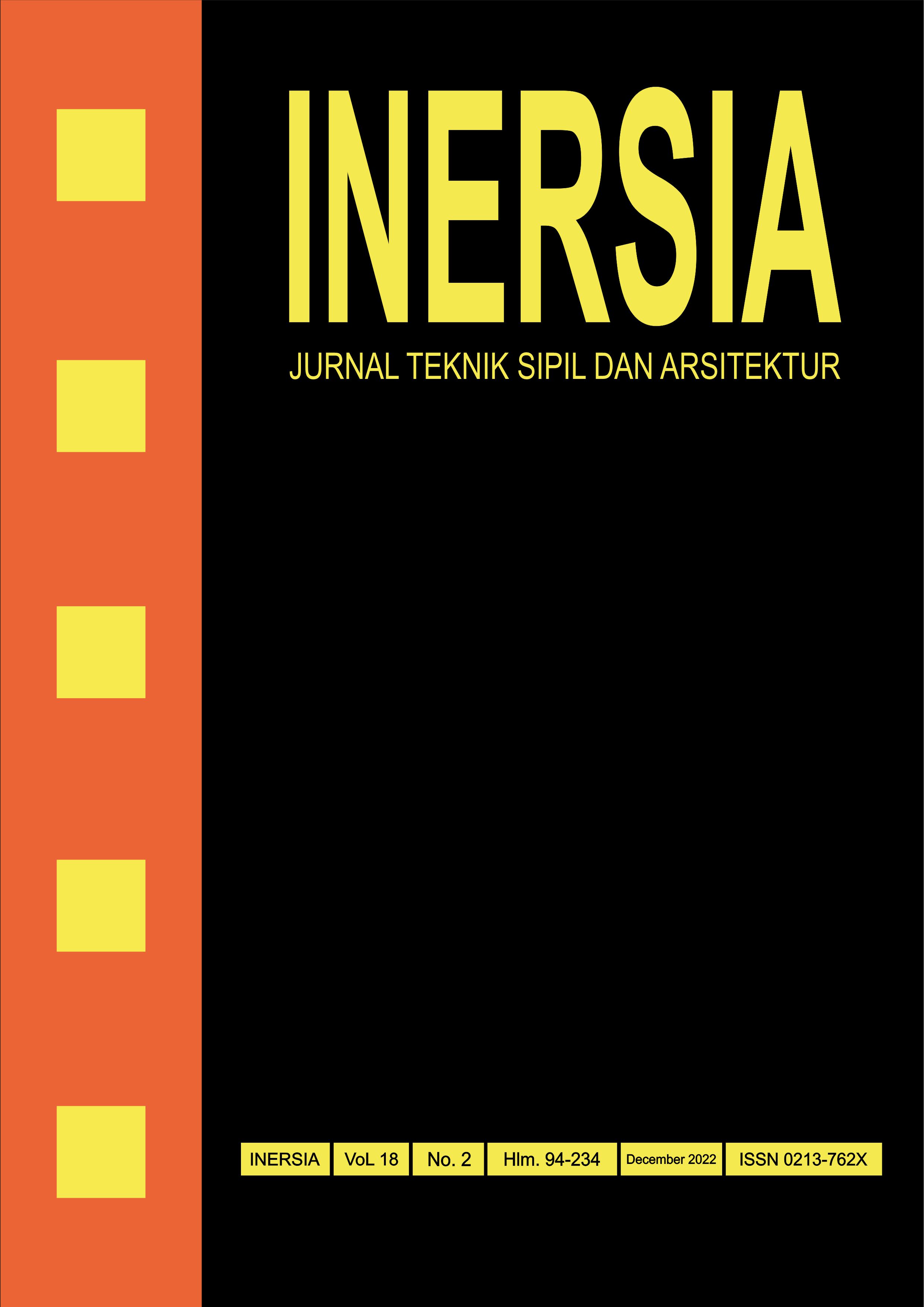Do Household Characteristics Influence Private Car and Motorcycle Ownership? Evidence from a Case Study in Yogyakarta Urban Area, Indonesia
DOI:
https://doi.org/10.21831/inersia.v18i2.55411Keywords:
Motorcycle Ownership, Car Ownership, Yogyakarta Urban Area, Path AnalysisAbstract
Yogyakarta is listed among the cities with the worst congestion in Indonesia. Besides, the development of Yogyakarta has now expanded to the surrounding area and agglomerated into the Yogyakarta Urban Area (KPY). Private vehicle ownership is closely correlated to the characteristics of households. This study aims to analyze the correlation of the level of private vehicle ownership with the characteristics of households and the correlation of private vehicle ownership towards the responses of households with transportation policies that will be implemented in the future. This study fully used secondary data. The total respondents were 8,810 households, and the research location was the Yogyakarta Urban Area (KPY). The path analysis was employed to find out the causal relation between variables and the contribution between variables in the analysis. The variables used were gender, age, education level of the heads of households, total household income, the number of adult family members (> 17 years old), the number of children (<17 years old), the number of working family members, total motorcycle licenses in a household, total driver's licenses in a household, total motorcycle ownership in a household, total car ownership in a household, and the responses of households to the transportation policies that will be applied. The results of the study show that motorcycle ownership in a household is influenced by gender, age, the level of education of the heads of households, total household income, the number of adult family members, the number of children, the number of working family members, and total motorcycle licenses in a household. Meanwhile, car ownership in a household is influenced by age, total household income, the number of working family members, and total driver's licenses in a household. There is also a correlation between motorcycle and car ownership. Increasing car ownership in a household has a positive correlation with motorcycle ownership. Furthermore, motorcycle ownership has a good significance value and a positive correlation with pedestrianization policies prioritizing public transportation in the Mangkubumi-Malioboro-Kraton area.
References
Badan Pusat Statistik 2005, Kota Yogyakarta Dalam Angka 2005, Yogyakarta.
Badan Pusat Statistik 2016, Statistik Daerah Kota Yogyakarta 2016, Yogyakarta.
Broaddus, A., Litman, T. & Menon, G. 2010, Manajemen Permintaan Transportasi, hal. 130.
Eriksson, L., Garvill, J. & Nordlund, A.M. 2006, "Acceptability of travel demand management measures: The importance of problem awareness, personal norm, freedom, and fairness," Journal of Environmental Psychology, vol. 26, no. 1, hal. 15–26.
Fan, H.S.L., Menon, A.P.G. & Olszewski, P.S. 1992, "Travel demand management in Singapore," ITE Journal, vol. 62, no. 12, hal. 32–4.
Garling, T. & Schuitema, G. 2007, "Travel Demand Management Targeting Reduced Private Car Use: Effectiveness, Public Acceptability and Political Feasibility," Journal of Social Issues, vol. 63, no. 1, hal. 139–53.
Goetzke, F. & Weinberger, R. 2012, "Separating contextual from endogenous effects in automobile ownership models," Environment and Planning A, vol. 44, no. 5, hal. 1032–46.
Golob, T.F. & Golob, T. 2001, Structural Equation Modeling for Travel Behavior Research RE ES SE EA AR RC CH H.
Hadi, M.A. & Sadharto, M.R.D. 2013, "Urban Sprawl di Kota Semarang: Karakteristik dan Evaluasinya Terhadap Rencana Detail Tata Ruang Kota," Jurnal Bumi Indonesia, vol. 2.
Hayden, D. 2004, A Field guide to sprawl, W. W. Norton & Company, New York; London.
Hsu, T.-P., Tsai, C.-C. & Lin, Y.-J. 2007, "Comparative Analysis of Household Car and Motorcycle Ownership Characteristics," Journal of the Eastern Asia Society for Transportation Studies, vol. 7, hal. 105–15.
Kementerian Perhubungan Republik Indonesia 2012, Standar Pelayanan Minimal Angkutan Massal Berbasis Jalan.
Leong, L.V. & Sadullah, A.F.M. 2007, "A Study on the Motorcycle Ownership : A Case Study in Penang State , Malaysia," Eastern Asia Society for Transportation Studies, vol. 7, no. 2004, hal. 528–39.
Lewis, T. 2017, "Fit Statistics commonly reported for CFA and SEM," Cornell Statistics Department, vol. 08, hal. 0–1.
Nolan, A. 2010, "A dynamic analysis of household car ownership," Transportation Research Part A: Policy and Practice, vol. 44, no. 6, hal. 446–55.
Undang- Undang Republik Indonesia No. 26 Tahun 2007 Tentang Penataan Ruang 2007, Jakarta.
Wedagama, D.M.P. 2009, "a Multinomial Logit Model for Estimating the Influence of Household Characteristics on Motorcycle Ownership :," ITS JOURNAL OF CIVIL ENGINEERING, vol. 29, no. 1, hal. 2–9.
Whelan, G. 2007, "Modelling car ownership in Great Britain," Transportation Research Part A: Policy and Practice, vol. 41, no. 3, hal. 205–19.
Downloads
Published
How to Cite
Issue
Section
License
Authors who publish with INERSIA journal agree to the following terms:
- Authors retain copyright and grant the INERSIA journal right of first publication with the work simultaneously licensed under Creative Commons Attribution License (CC BY 4.0) that allows others to share the work with an acknowledgment of the work's authorship and initial publication in this journal.
- Authors can enter into separate, additional contractual arrangements for the non-exclusive distribution of the published version of the work (e.g., post it to an institutional repository or edit it in a book), with an acknowledgment of its initial publication in this journal.
- Authors are permitted and encouraged to post their work online (e.g., in institutional repositories or on their website) before and during the submission process, as it can lead to productive exchanges, as well as earlier and greater citation of published work.

INERSIA by https://journal.uny.ac.id/index.php/inersia was distributed under a Creative Commons Attribution 4.0 International License











